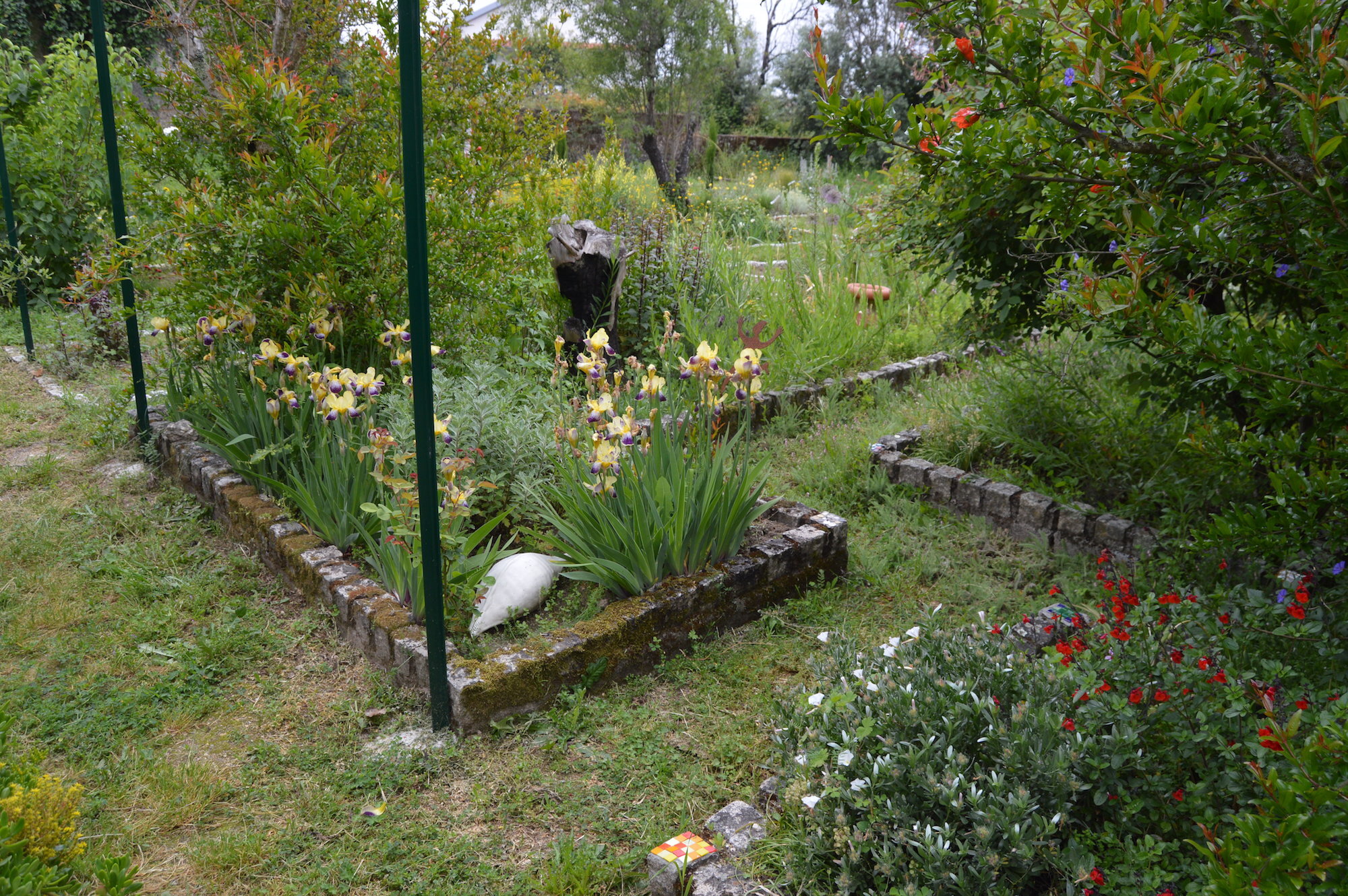
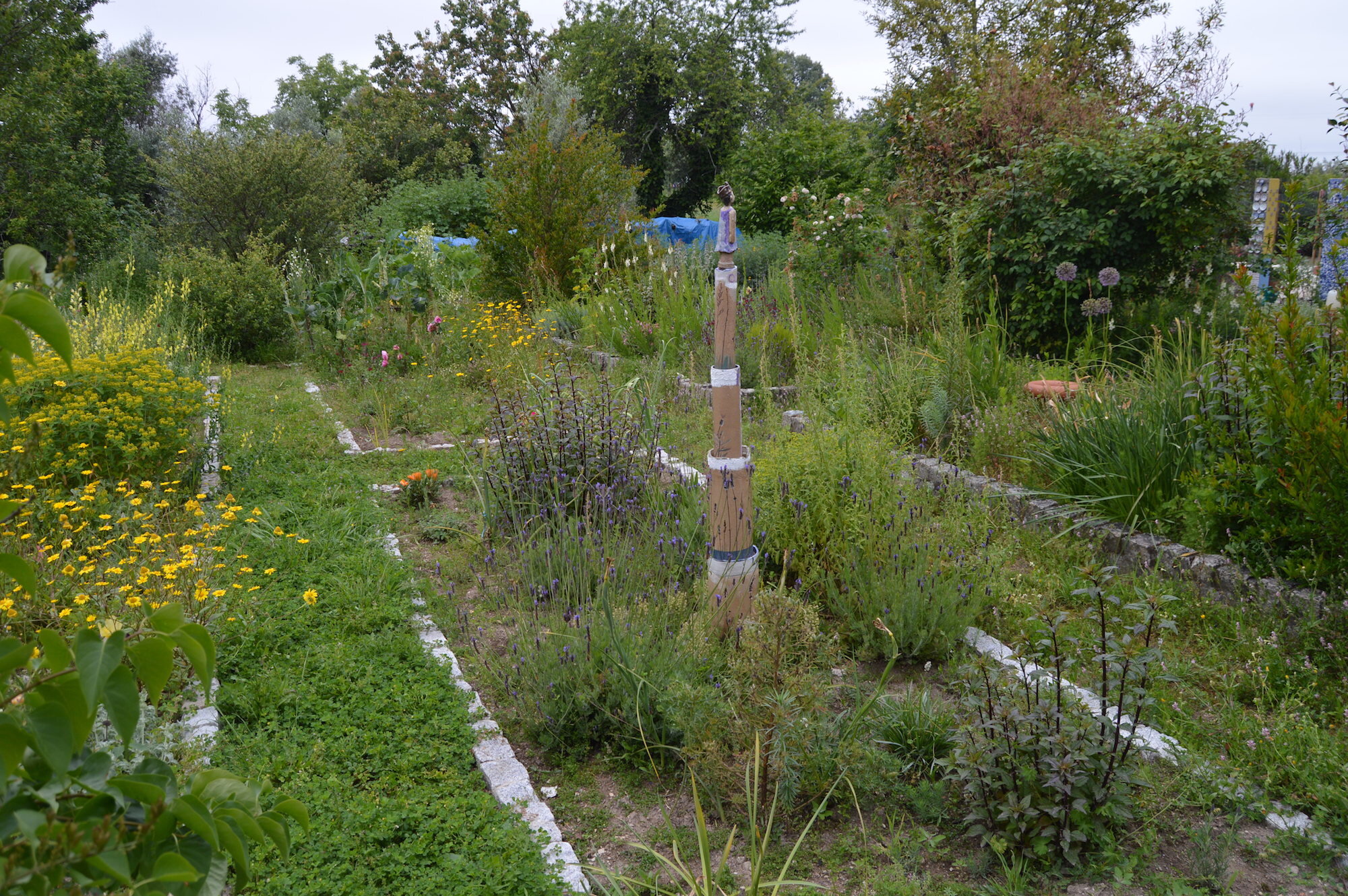

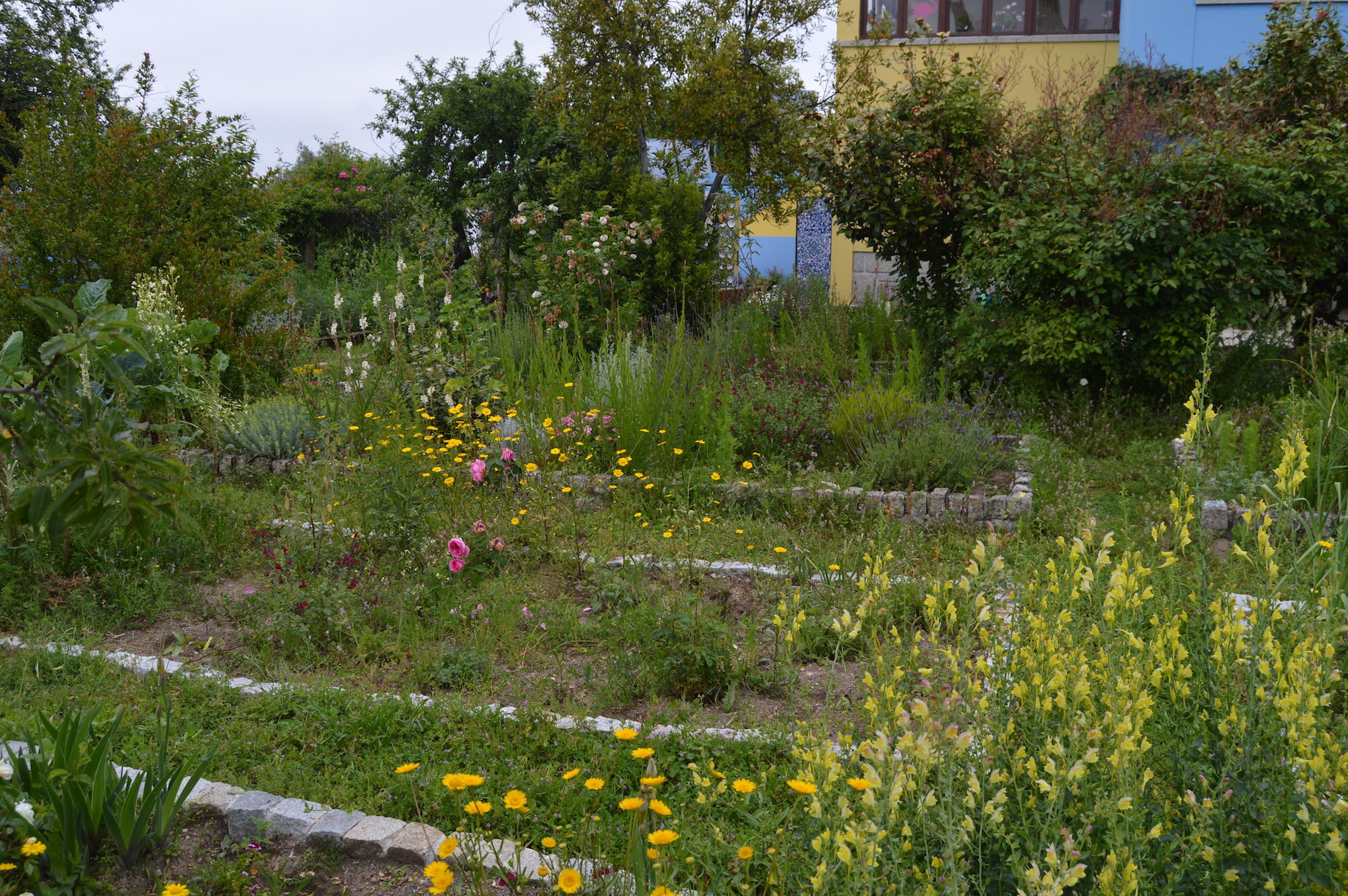
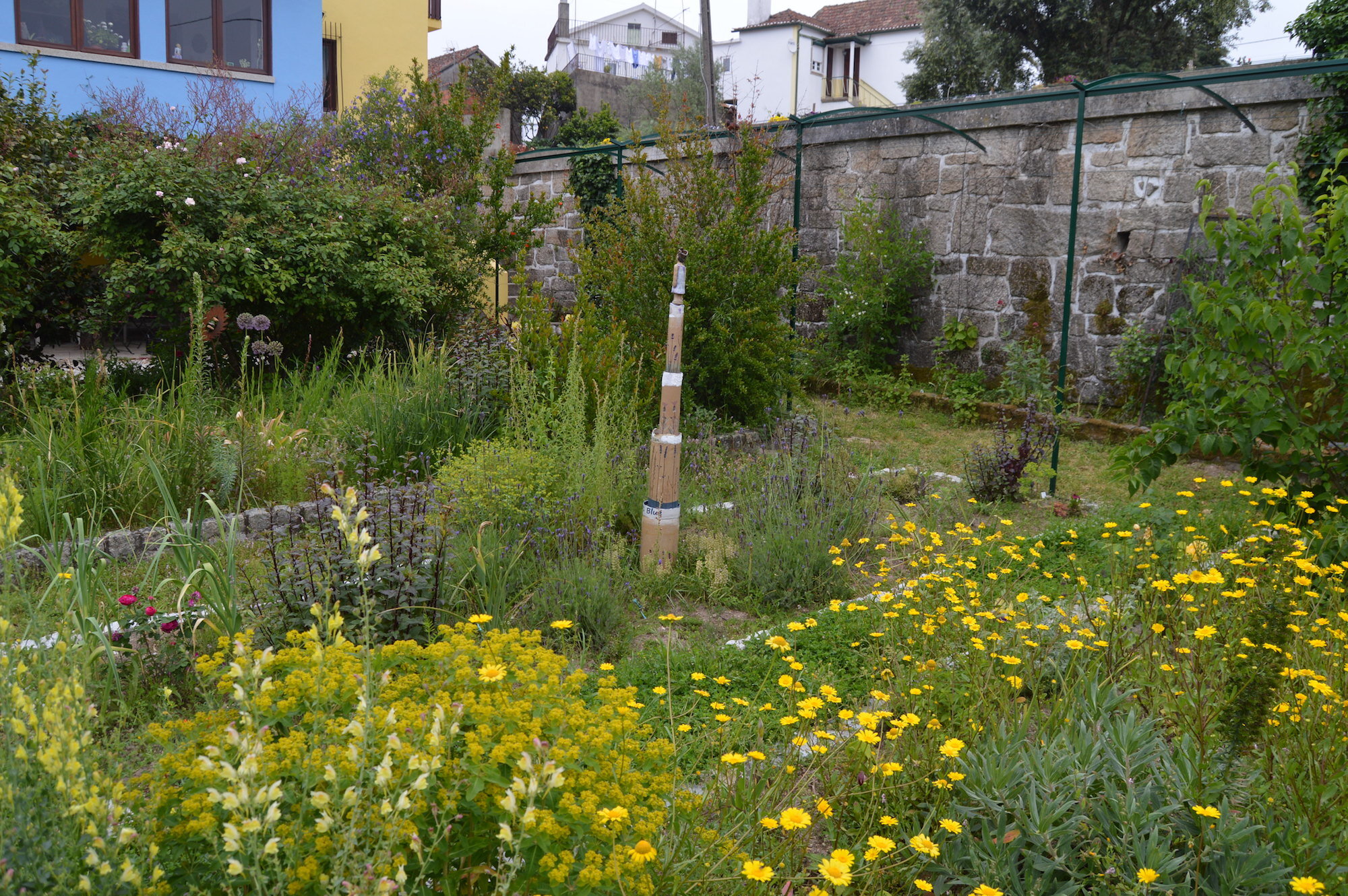
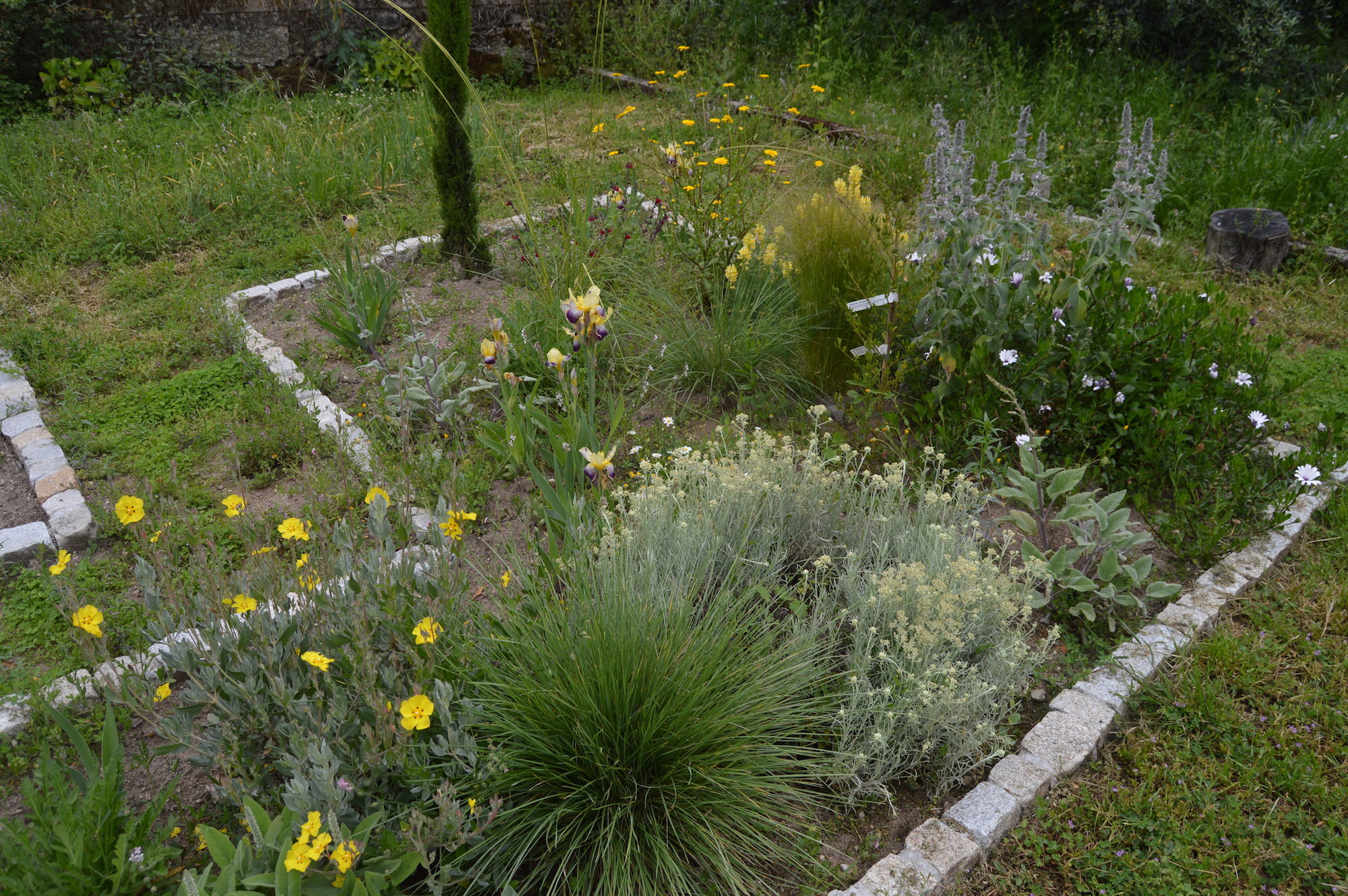
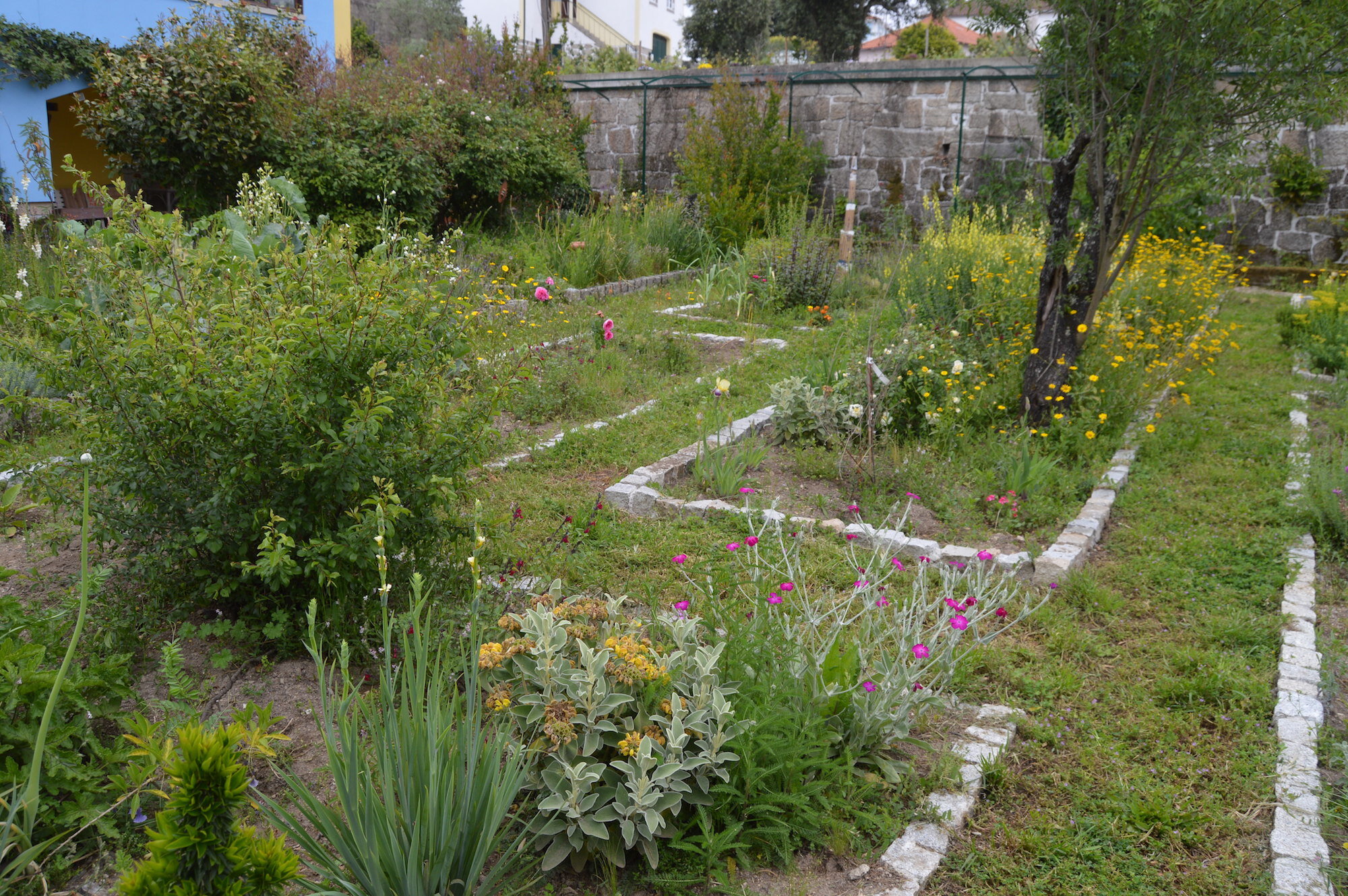

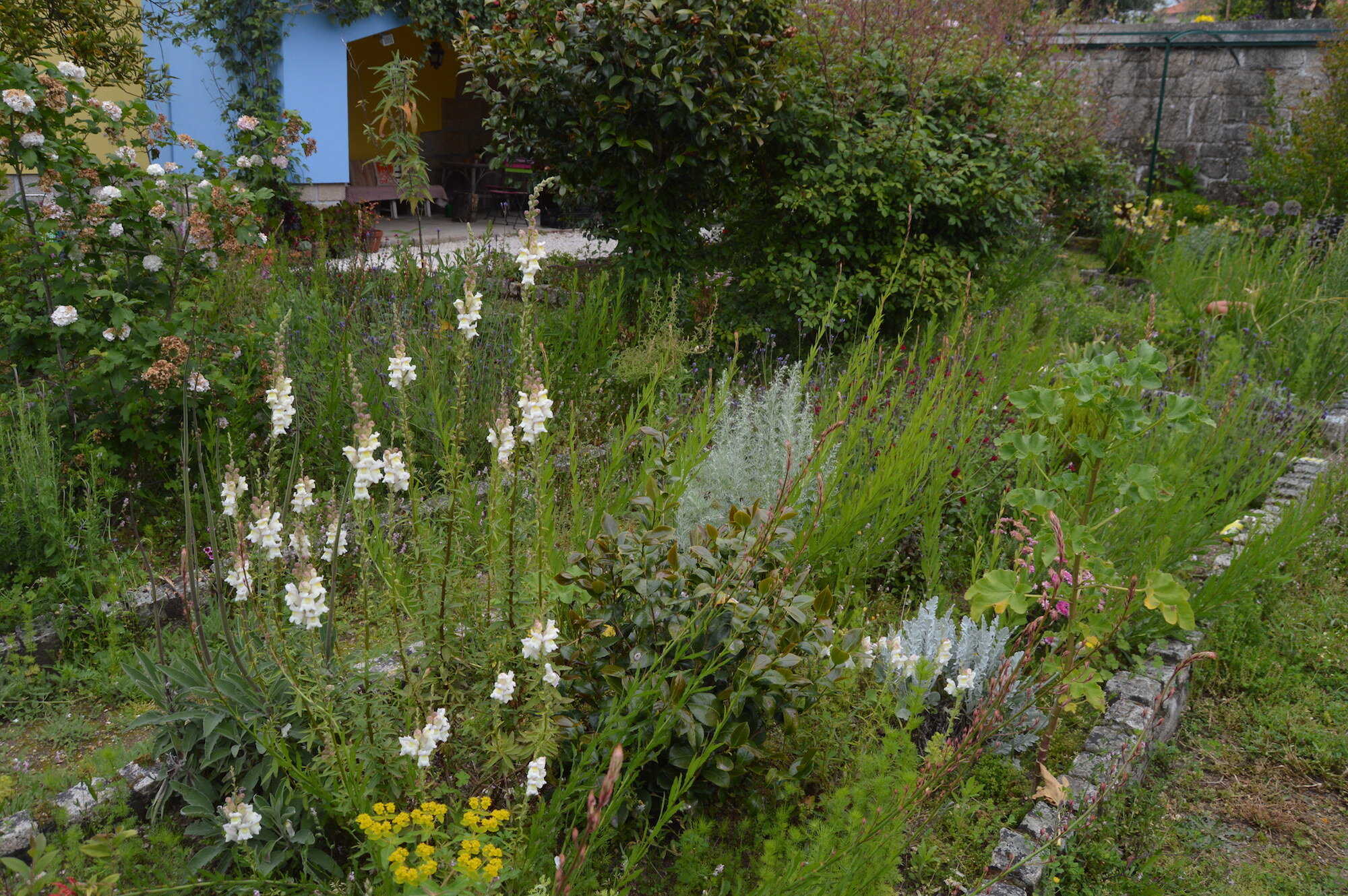

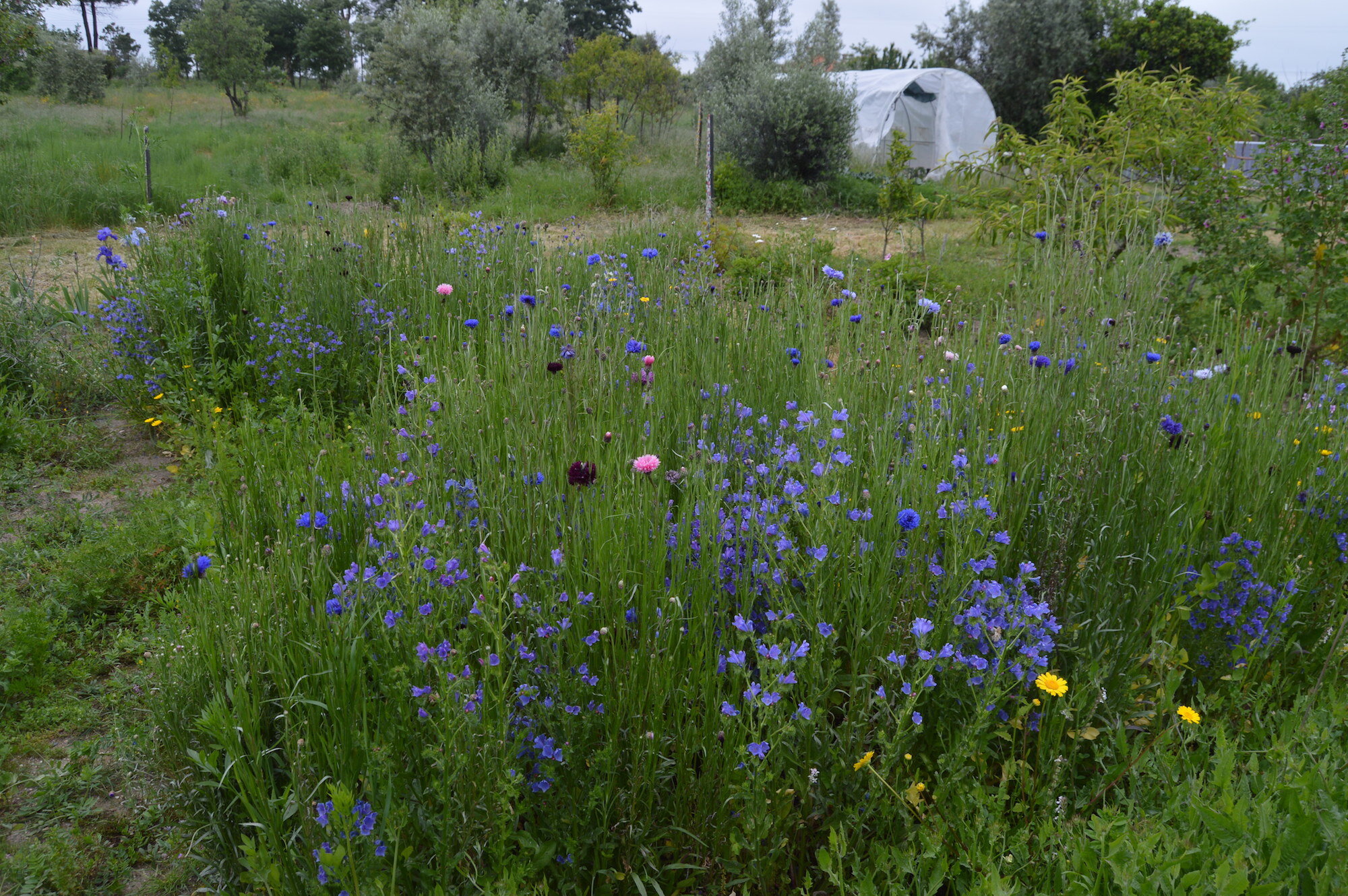
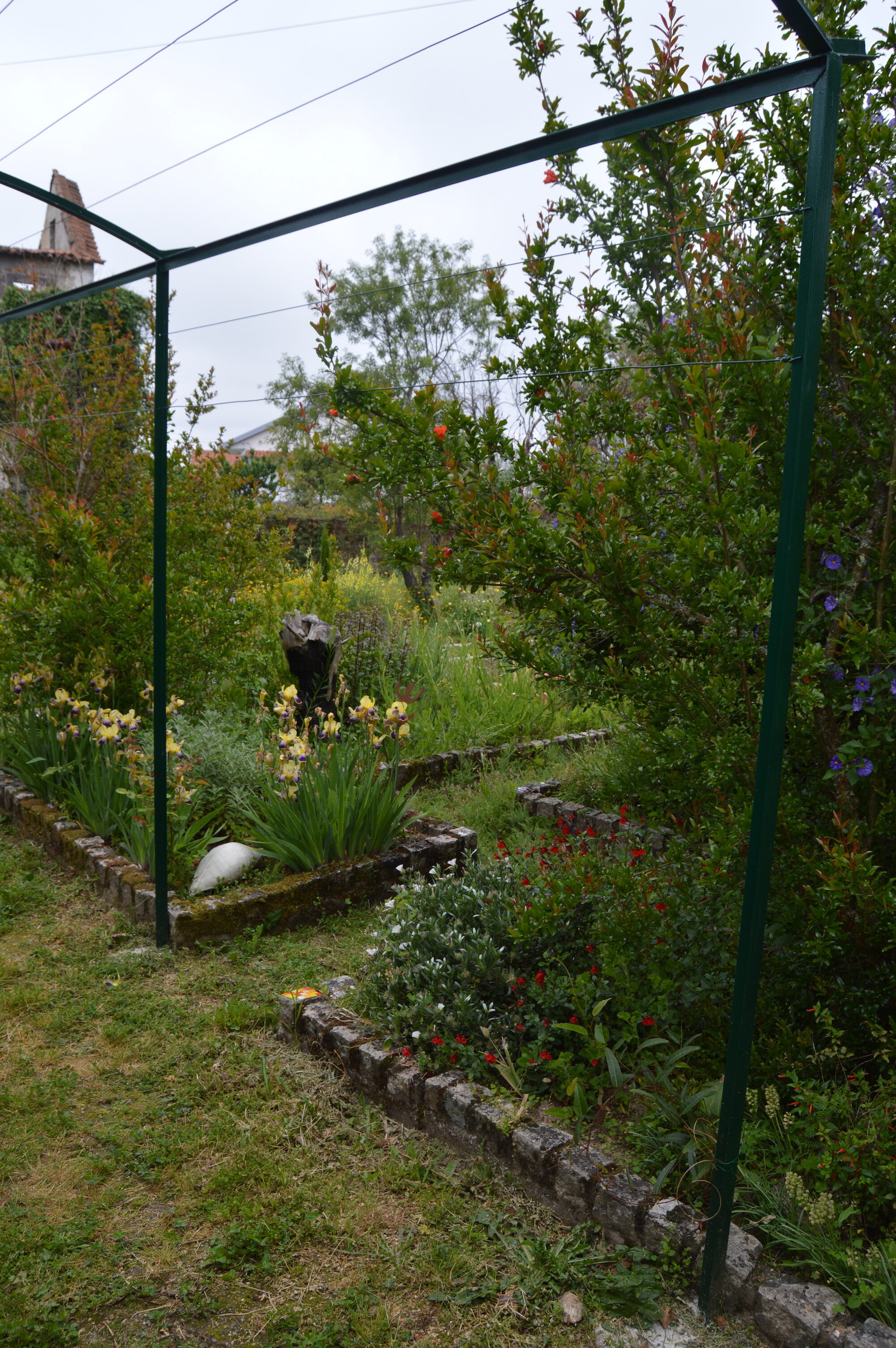
Above: the garden in May, fresh, green and flowery
It's our second Portuguese summer and the big learning curve about drought tolerance continues. Actually so far, we have been very lucky, only a couple of days in the mid 30s and a lot in the 20s with cool nights, and overcast skies. Which makes life for plants, and us, so much easier. Grey skies can be such a relief sometimes!
So how are we getting on? It looks like I last reported on progress back in January, with a resumé of a year on the learning curve. Here’s the next update which I'm going to address things thematically.
The basic strategy
….. is “irrigation for survival, not to keep things looking good”, i.e. to accept that summer is a dormant season here in the Mediterranean region. Only new plants, vegetables, and one patch of annuals (Jo’s zinnia patch) are kept irrigated.
Shade
Light levels are surprisingly poorly addressed in the garden literature. It was some years ago I came across an American writer (sorry, can't remember who) pointing out what should be obvious to us all, that plants that in the South need shade may be fine in open conditions in the northern states, and of course in Canada and vica-versa.. This made me look at plants in Scotland and Scandinavia anew, and I realised that of course the further north you go, the less so-called shade lovers really need shade, and the further south you go the more that sun-lovers don't mind some shade.
One of the lessons of walking in the Portuguese countryside, is that things we north Europeans think of as sun-plants, often flourish under trees – cistus and lavender for example. I am coming to the conclusion that any bit of shade can be of huge benefit to anything on the wet side of cacti. Pelargoniums do far better in a bit of shade than out in the open sun. Mexican salvias are of course mostly plants of sparse pine and oak woodland, so we would expect them to do better under a tree; in sun they survive but look very scrappy from June til the autumn, in shade however they keep more leaves and flower more freely. Broadleaved evergreens are almost all woodland plants too – so it is no surprise that Prunus lusitanica easily burns in full sun and camellias can do to, even the supposedly more sun-tolerant sasanquas. It is normal to plant camellias out in full sun in our region, but the combination of intense sunshine and temperatures in the mid-30s that climate-change summers are bringing to this part of the world, may make this a practice of the past.
Variations in soil
There seems to be markedly-different survival rates/water needs between different parts of the garden. Quite often for no apparent reason. It is a sandy, gritty soil anyway, incredibly free-draining, and coarser texture areas not surprisingly are more problematic, but other in areas there seem to be real differences with dry-sensitive plants like abutilons for no apparent reason. Possibly to do with soil depth, which is not something you have any idea of from the surface – on granite this is particularly the case, as shown by the vast boulders that tend to rear up out of people's gardens and smallholdings and be quite a feature of the local landscape. Plants can get a huge amount out of the soil by capillary action and the deeper the soil the more reserves they will have to call on.
Some plants just survive
It is astonishing how some plants just seem to go on, with no need for irrigation. Gaura lindheimii (now Oenothera lindheimii, I was recently surprised to learn. It produces its white flowers pretty well all summer – shame it is such a messy grower! Bupleurum fruticosum has been incredible, planted out from large plugs from Sigmetum last year, they have never been watered and are now 1.5m high, and making a real impact. Tree seedlings also show amazing reserves, and the smaller they go in the better. Even oak tiny plants of Quercus robur seems to stay green all summer. I’ll try and do a round of good survivors later this summer.
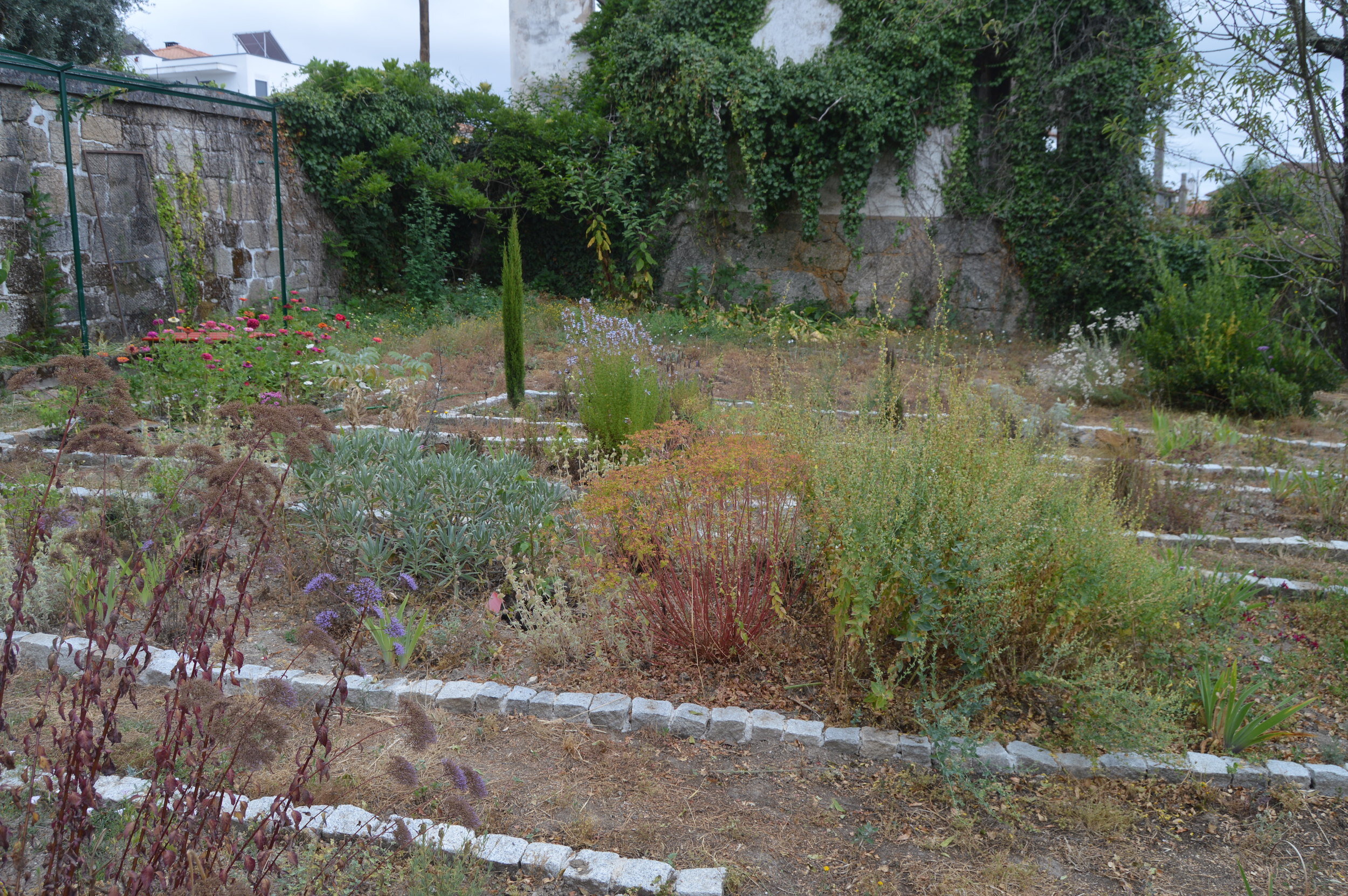
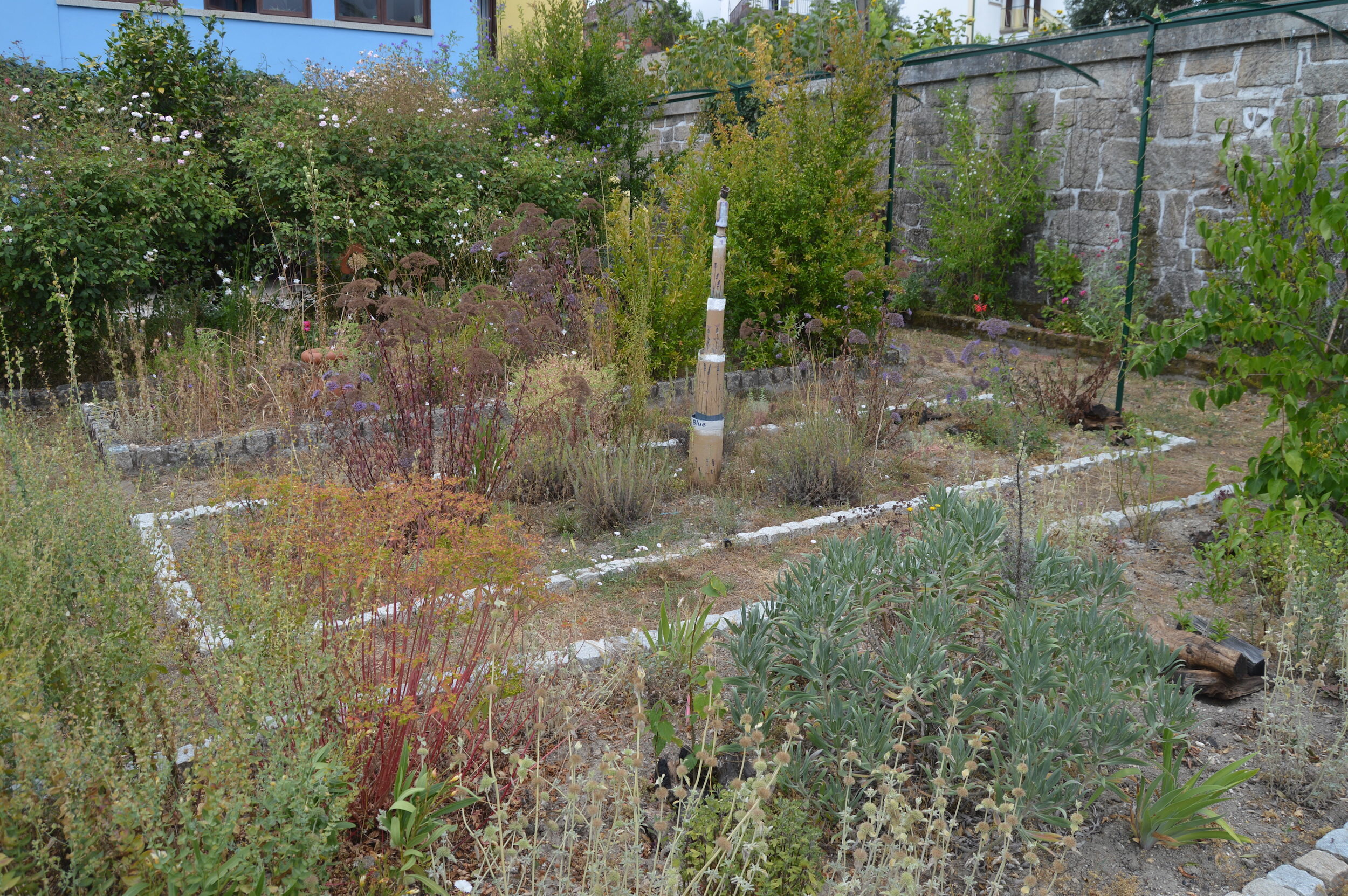
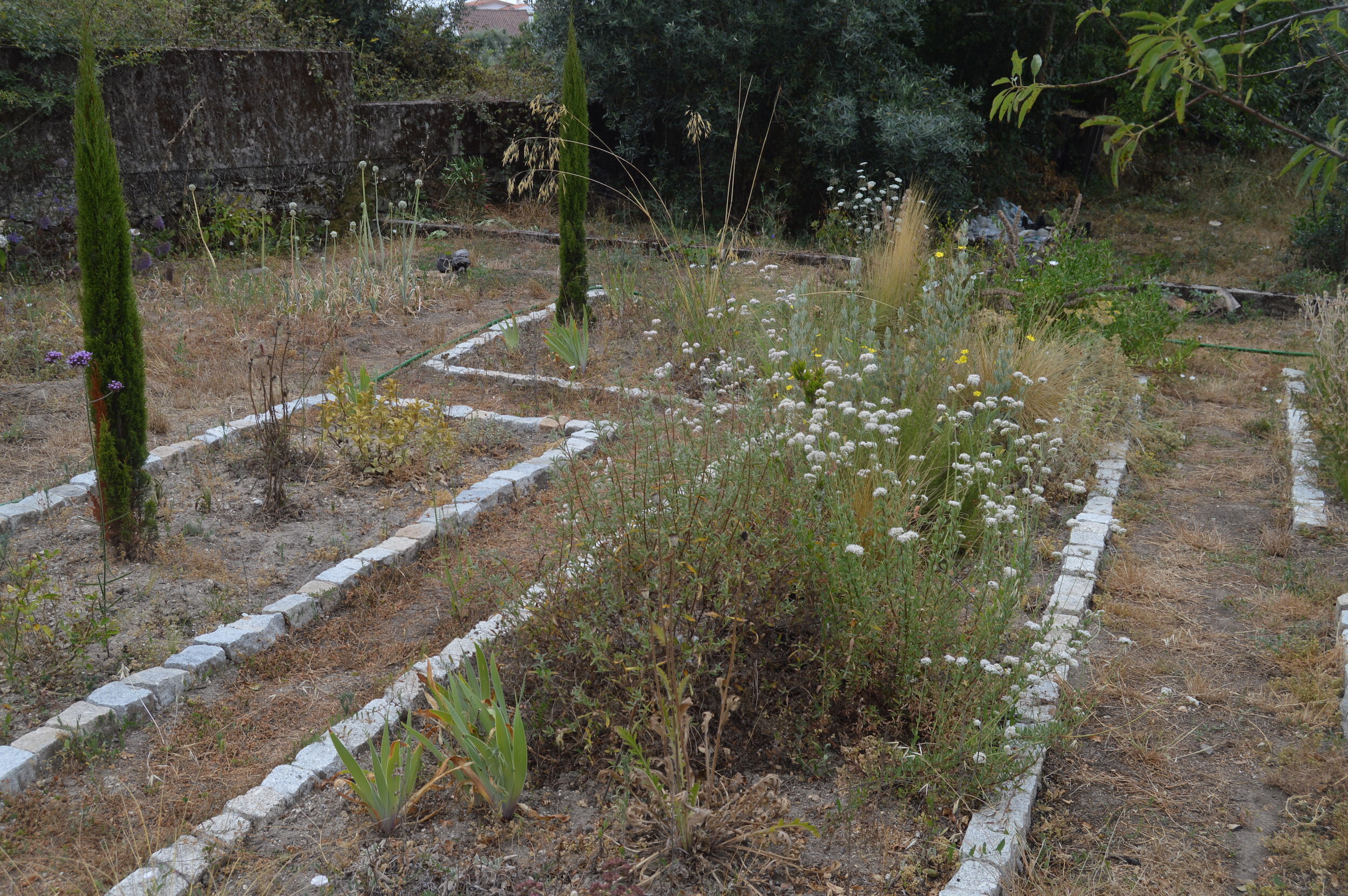
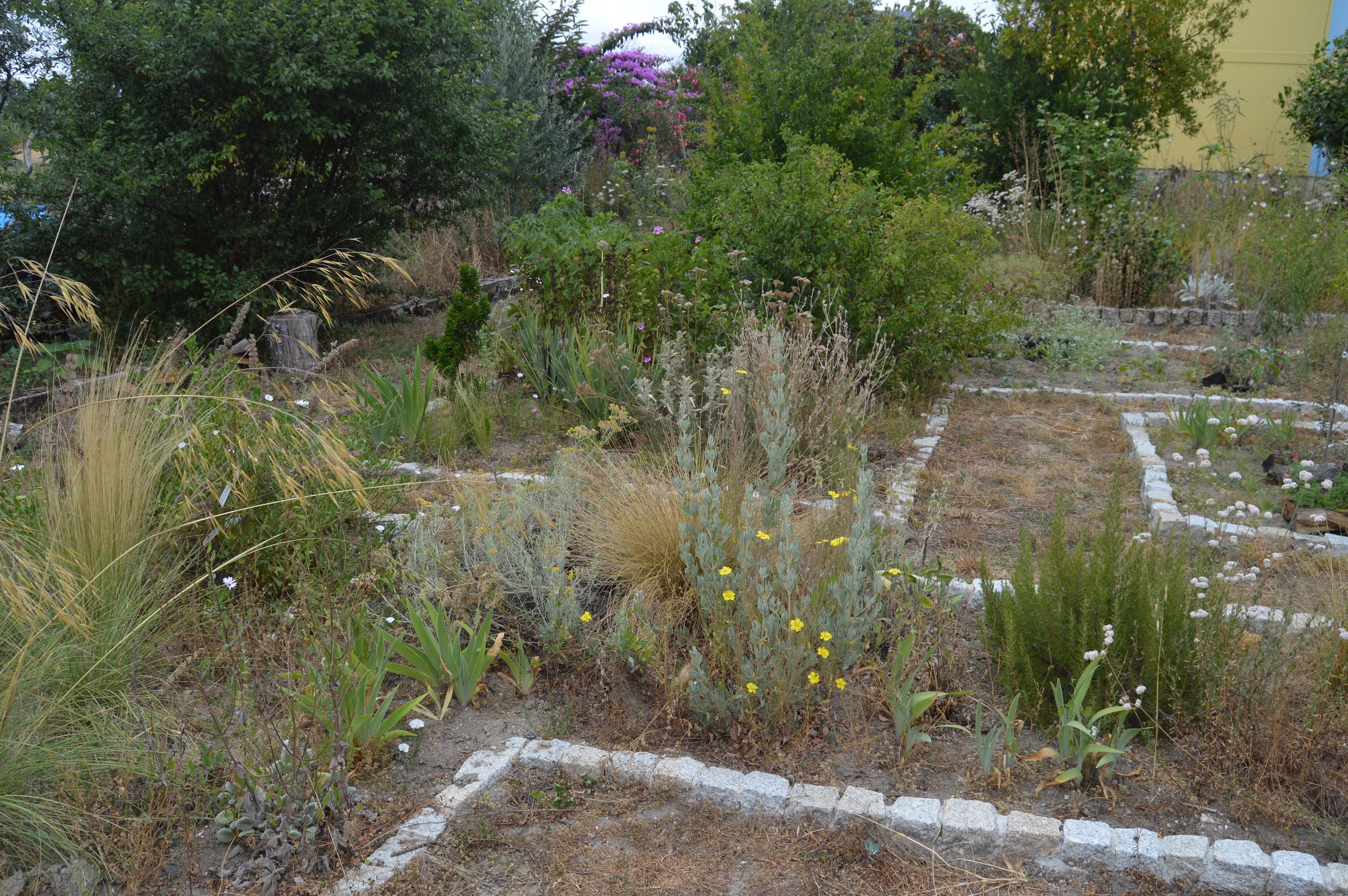
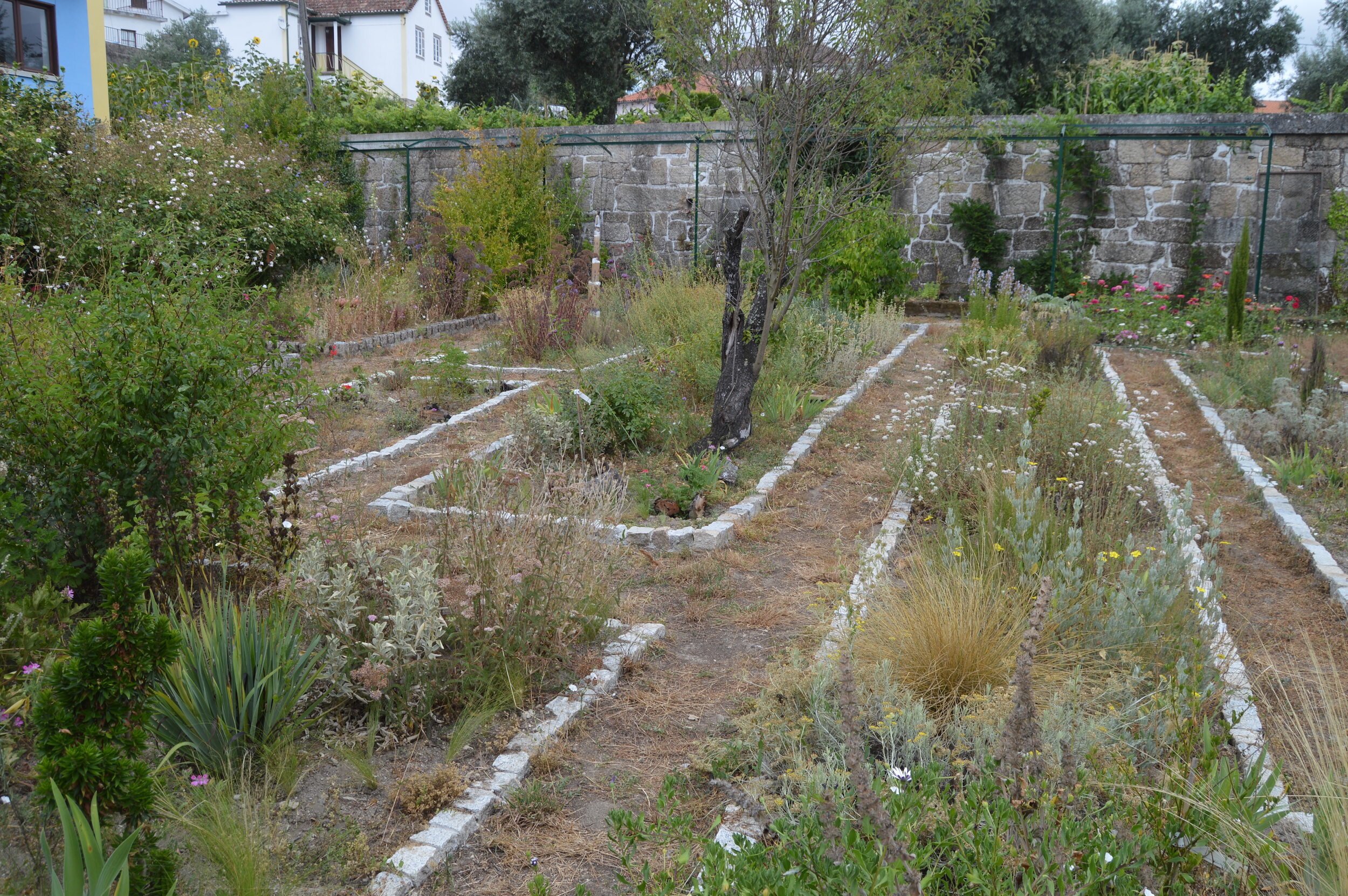
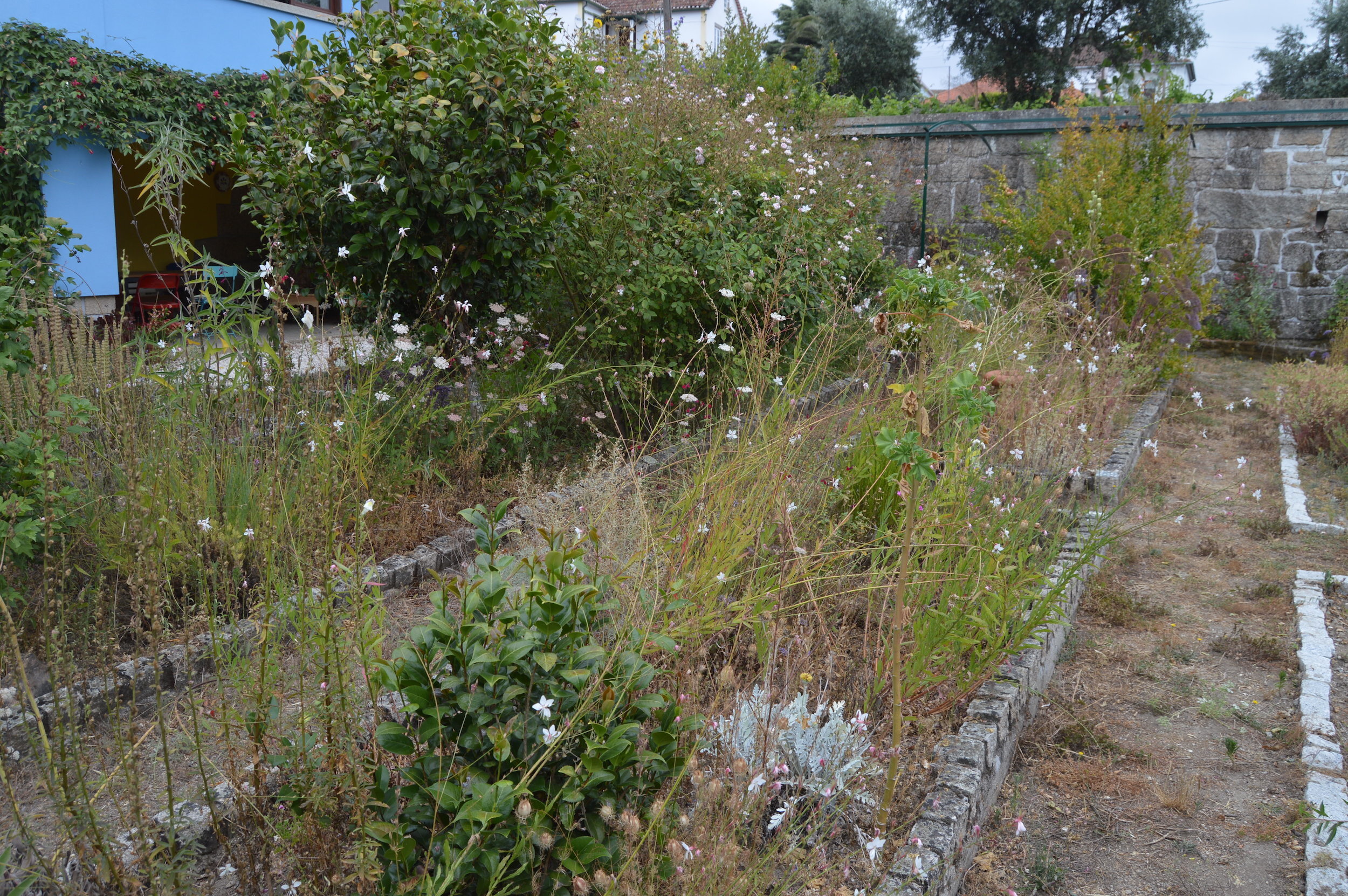
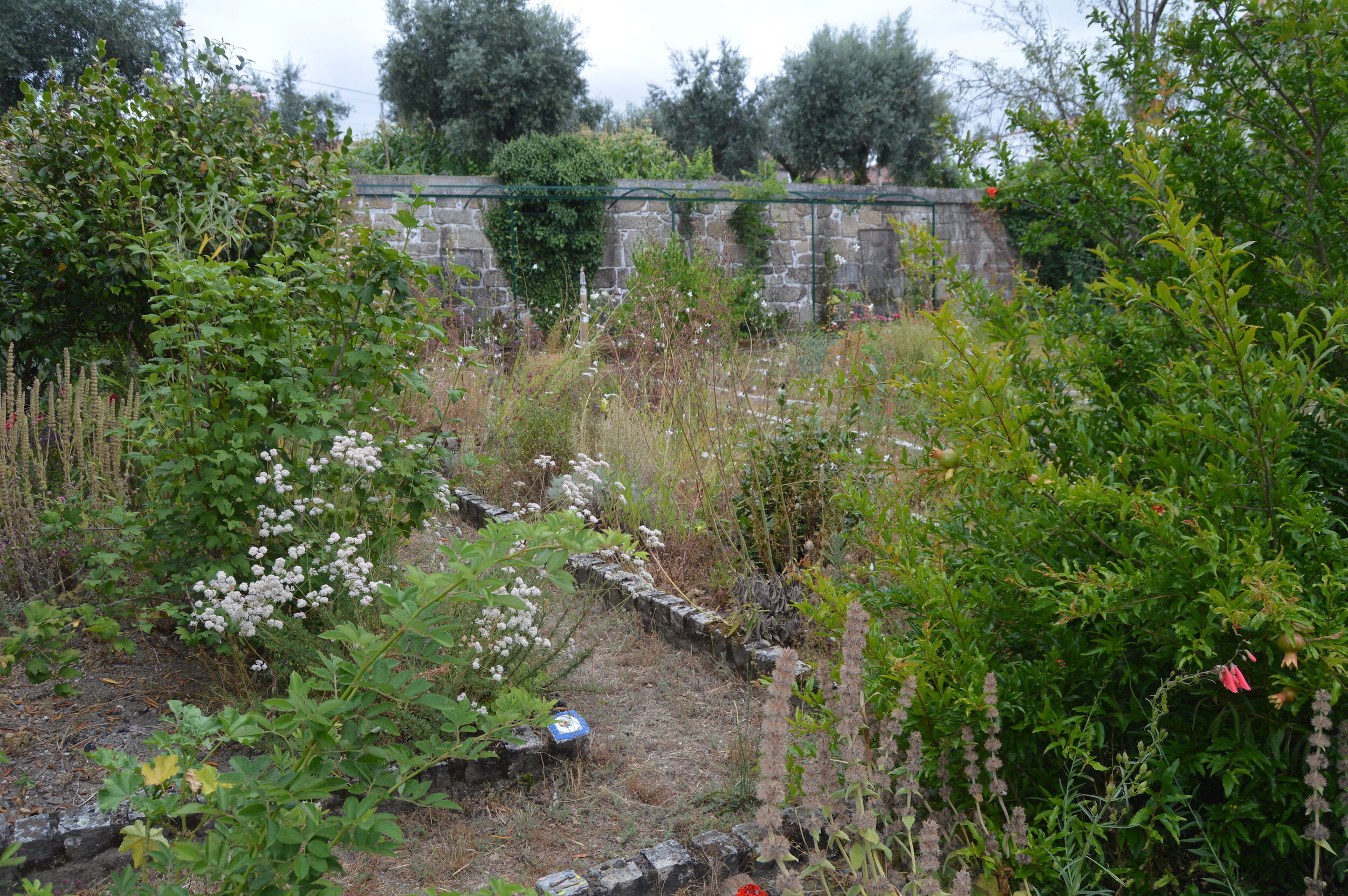

The garden in mid-July. Only new plants (‘mulched’ with firewood logs) and the Zinnia patch are kept watered.
Flammability
Fire is an ever-present danger here, and partially accounts for the deep antipathy many Portuguese people seem to have to any kind of wild vegetation. Anything with oil in the leaves or minute hairs is more likely to burn, which means many of the classic sub-shrubs of the region: Phlomis, Cistus, Lavandula. Which unfortunately cuts out many of the really attractive silver or grey foliage plants that makes summer bearable here. Near the house one can only use them occasionally. No-one as far as I know has done any research on this. Box is apparently more or less fire-proof which makes me think that a lot of broadleaved evergreens like Bupleurum, Viburnum tinus and Phillyrea will be too. Olives burn badly by the way.
Grasses that go summer dormant (not necessarily voluntarily) are probably a great danger. Anyone growing restios deserves to be deported immediately (perhaps to Iceland) – their hollow stems are so inflammable that it has been speculated that the plants actually drove the evolution of South African fynbos egetation. Locally-native Stipa gigantea stays green and low and is almost certainly low risk.
Planting time
Little things (9cms pot and smaller) planted out late (like the beginning of summer) can survive if they are planted in Olivier Filippi – recommended depressions, which you can pour 3-5 litre of water once a week, or maybe even more. I am developing a theory that if you keep these well watered in the early part of summer they'll get their roots down enough to let them go more or less dormant the last part of summer.
Given our very mixed success with March planting of 25mm plugs (see last blog on the matter) and then not watering, this year I've started a nursery bed, lining them out to grow on for transplanting next winter. As it happens the area I chose has (rather randomly) turned out to keep them going with almost no irrigation so far this summer. In future I'm going to try to plant everything out in the autumn/earlier part of winter.
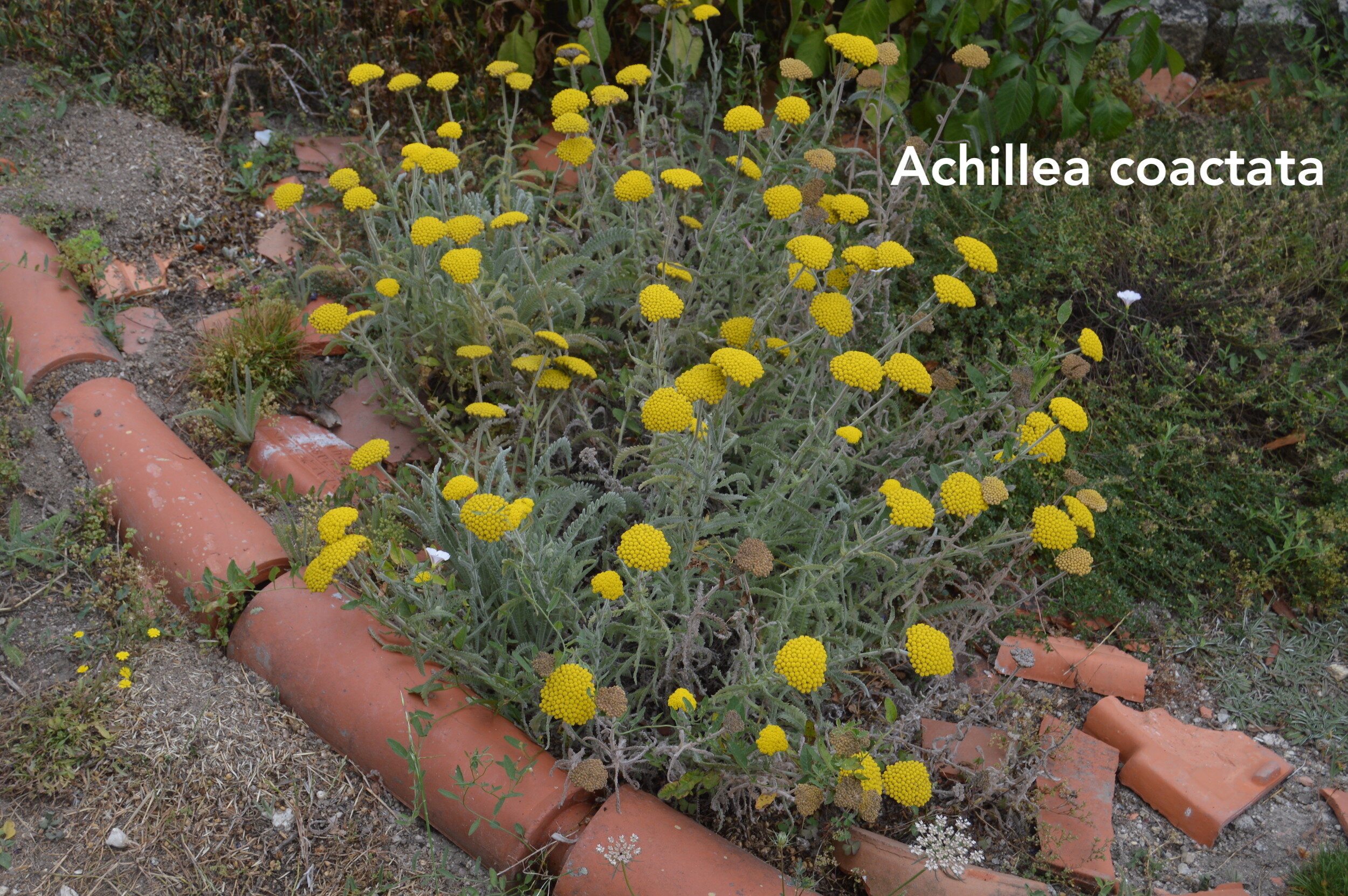

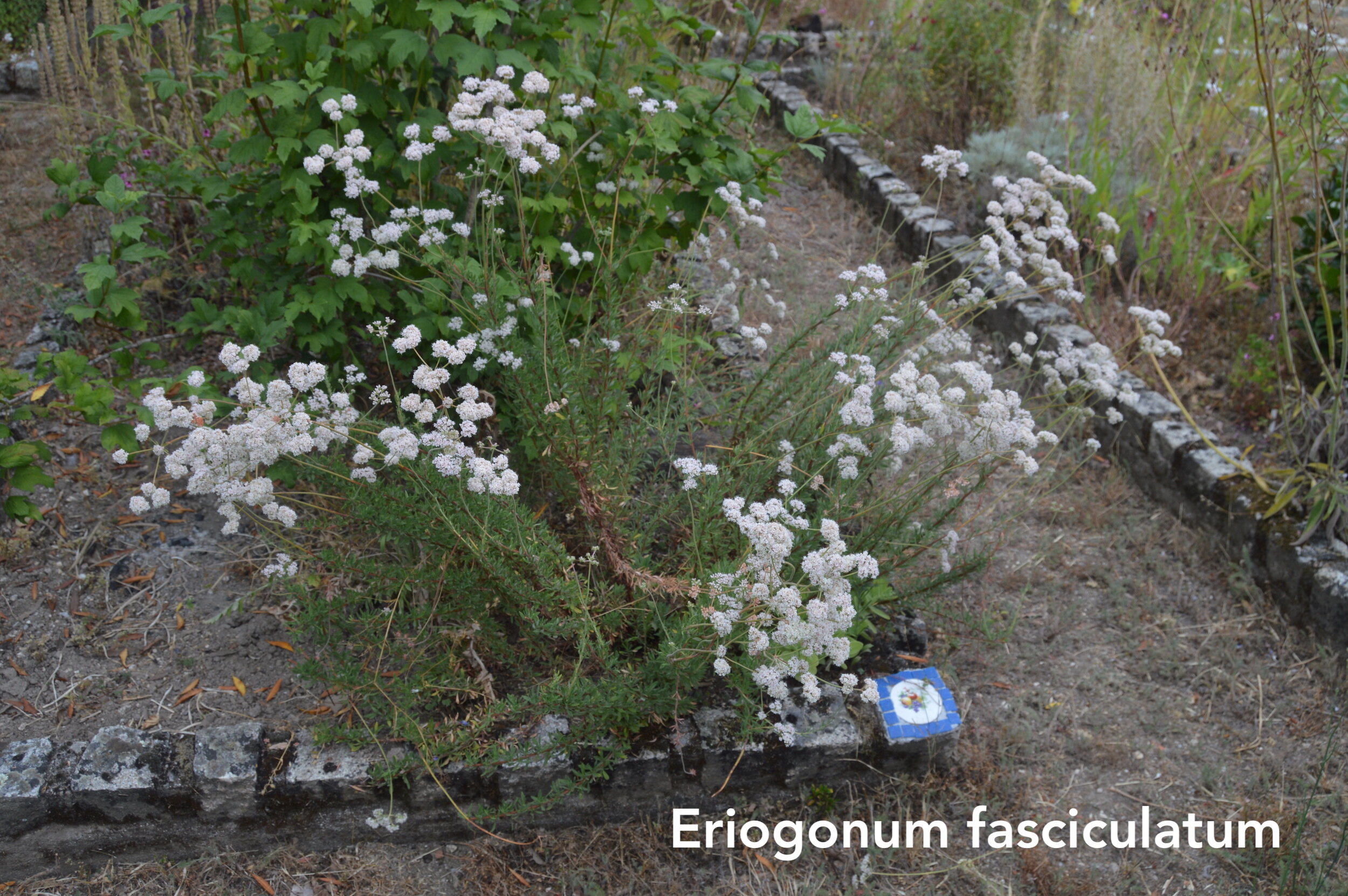
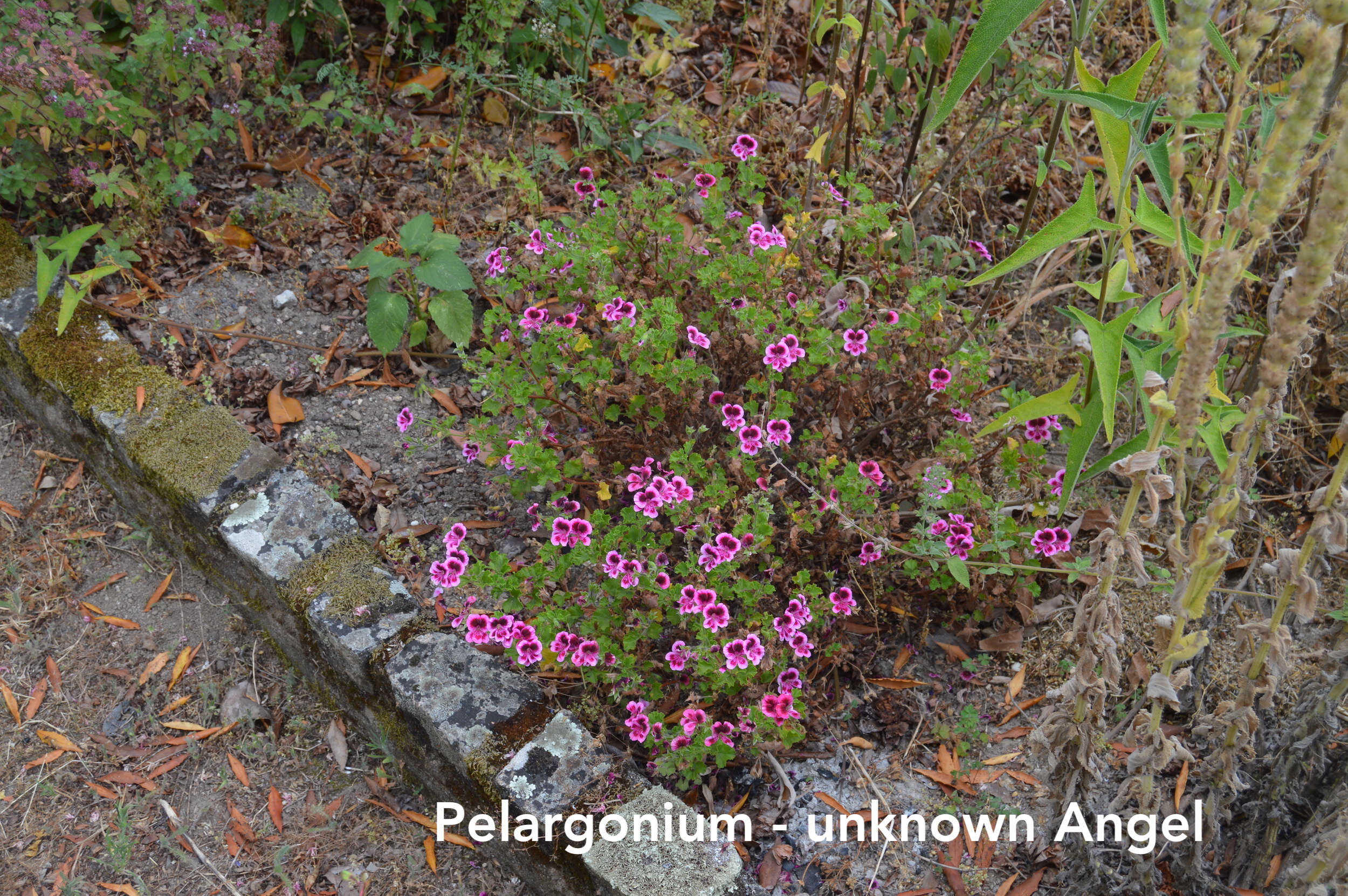
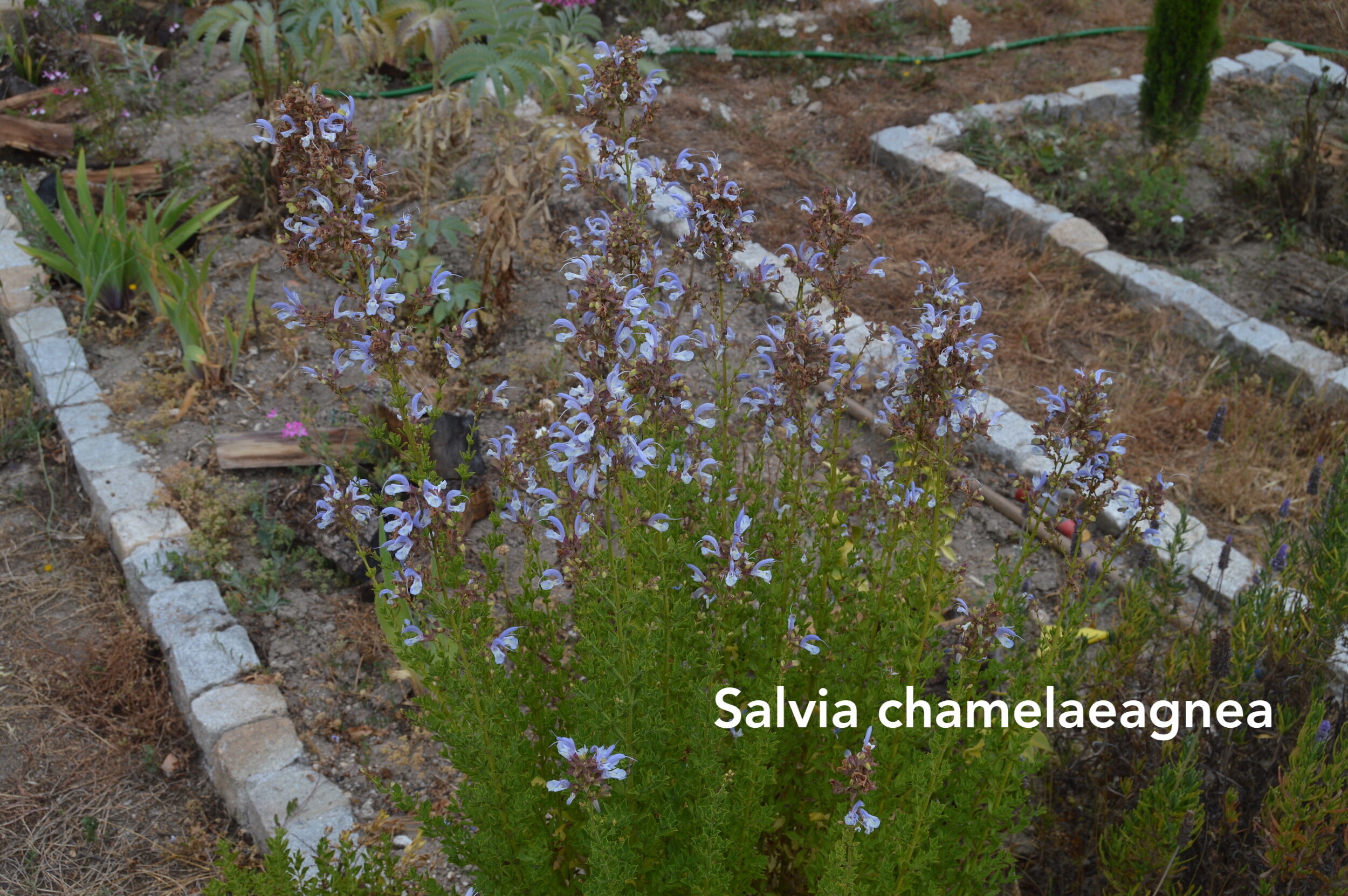
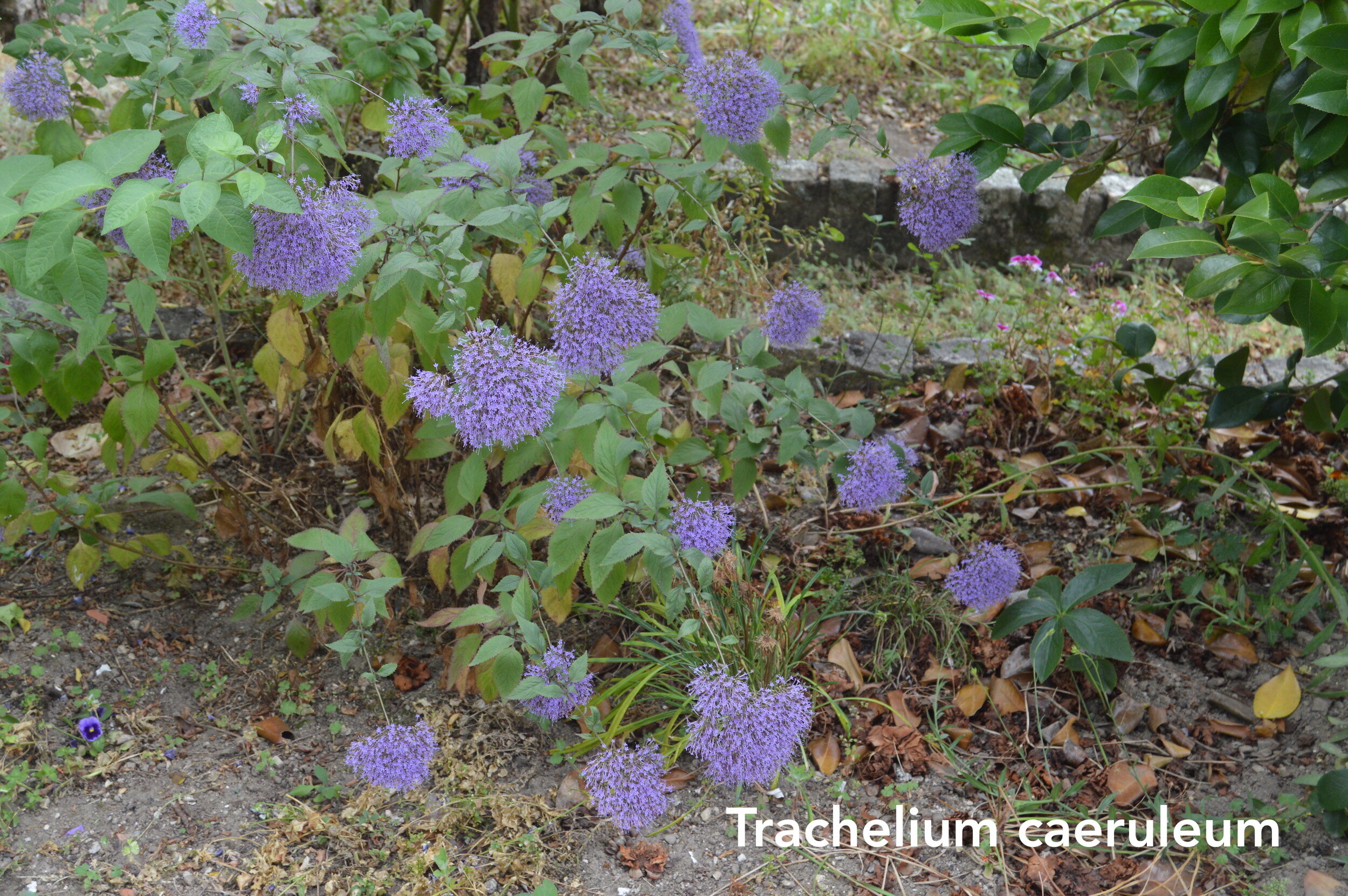
This July’s best performers.